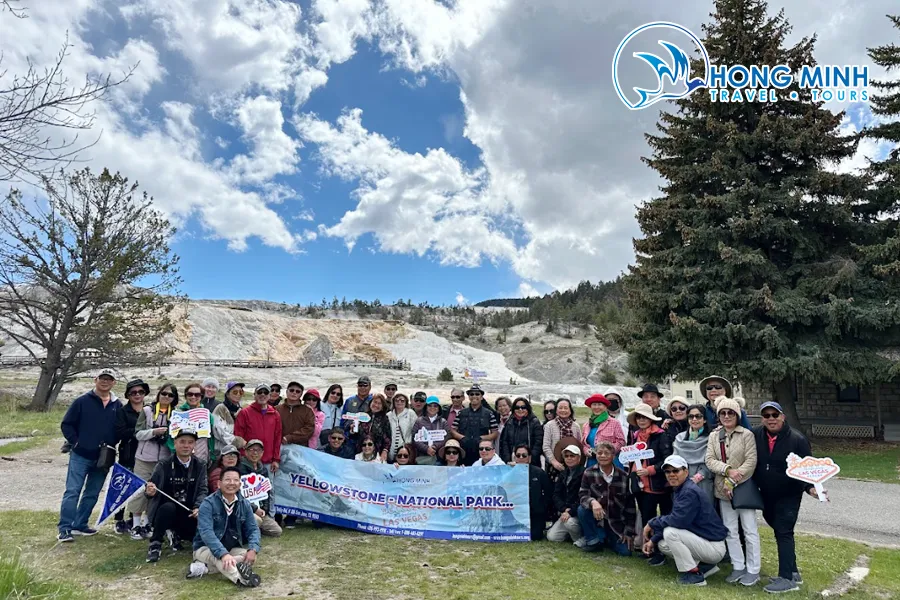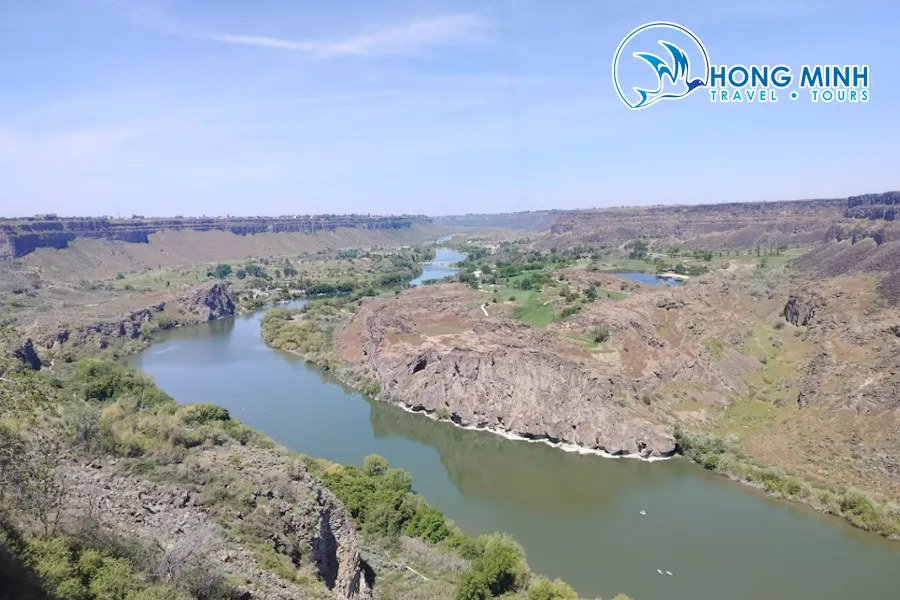Idaho, a mountainous state in the Northwestern United States, is celebrated for its pristine natural beauty and rich biodiversity. It’s not only a dream destination for adventure travelers but also a paradise for wildlife photographers, especially those passionate about whitetail deer. With its diverse terrain ranging from high mountains and dense forests to grasslands and lakes, Idaho provides an ideal habitat for these graceful creatures. If you are an avid photographer eager to capture stunning moments of whitetail deer in their natural environment, Idaho is a destination you shouldn’t miss.
In this article, Discovery To Wonders will guide you through the top locations in Idaho where you can indulge your passion for whitetail deer photography and immerse yourself in the wilderness of the American West. We will explore the whitetail deer’s habitat, the best times for photography, and helpful tips to capture the most impressive shots. Let’s begin our journey to discover these amazing destinations!
Yellowstone Bear World: Idaho’s Wildlife Haven in Miniature
One of the must-visit spots for whitetail deer photography in Idaho is Yellowstone Bear World. Despite its name suggesting a focus on bears, this wildlife park is actually a treasure trove of North American wildlife, including whitetail deer. Yellowstone Bear World is not your typical zoo; it’s a wildlife park where animals roam freely in habitats closely resembling their natural environments.
Visiting Yellowstone Bear World offers a unique “photo safari” experience right from your car. The park is designed as a “drive-thru,” allowing you to slowly drive through animal habitats and observe them up close. This not only provides an exciting experience but also creates favorable conditions for photography, especially when you want to capture the most natural and authentic moments of whitetail deer.
At Yellowstone Bear World, whitetail deer live in a spacious environment with forests, grasslands, and lakes, creating a beautiful backdrop for your photos. You might spot them grazing, wandering leisurely through the trees, or even interacting with other wildlife in the park. The diversity of habitats and natural behaviors of whitetail deer here provides countless opportunities for creativity and capturing unique moments.

To get the most impressive whitetail deer photos at Yellowstone Bear World, plan your visit for early morning or late afternoon. These are the times when animals are most active, and the natural light is soft, creating beautiful colors and shadows. Prepare your camera with a telephoto lens to capture sharp close-up shots even when you can’t get too close to the deer. Also, don’t forget to bring extra batteries and a large capacity memory card, as you definitely won’t want to miss any valuable moments.
Besides whitetail deer, Yellowstone Bear World is also home to many other wildlife species, such as Rocky Mountain elk, bison, mule deer, Rocky Mountain goats, moose, American black bears, and grizzly bears. This is a fantastic opportunity to expand your wildlife photo collection and explore the rich biodiversity of Idaho.
Yellowstone National Park: Exploring Comprehensive Wilderness Beauty
While Yellowstone Bear World is an excellent destination to approach and photograph whitetail deer, if you desire a more expansive and diverse wilderness experience, Yellowstone National Park is an unmissable choice. Spanning across three states—Wyoming, Montana, and Idaho—Yellowstone is the first national park in the United States and one of the largest nature reserves in the world.
In Yellowstone National Park, whitetail deer roam freely in a vast natural environment, alongside countless other wildlife species like bears, wolves, bison, elk, and many rare birds. The national park is not only famous for its wildlife but also boasts magnificent natural landscapes with towering mountains, vast pine forests, sprawling grasslands, crystal-clear rivers and lakes, and unique geothermal wonders like the Old Faithful geyser and Grand Prismatic Spring.

To photograph whitetail deer in Yellowstone National Park, you’ll need to dedicate more time and effort compared to Yellowstone Bear World, but the experience and rewards will undoubtedly be incredibly worthwhile. You can drive along the park’s roads and stop at areas where whitetail deer are likely to appear, such as forest-edge meadows, areas near rivers and streams, or places with lush vegetation.
Some areas known for frequent whitetail deer sightings in Yellowstone National Park include Hayden Valley, the Mammoth Hot Springs area, and along the Madison and Firehole Rivers. However, whitetail deer are wild animals, so finding and approaching them requires patience and good observation skills. Always maintain a safe distance and respect the animals’ personal space, avoiding disturbance or stress.
To increase your chances of successful whitetail deer photography in Yellowstone National Park, consult information from visitor centers or park rangers about areas where whitetail deer are commonly seen and their activity patterns. Additionally, using binoculars and experienced local guides can also help you spot and approach whitetail deer more easily.
When photographing in Yellowstone National Park, you not only have the opportunity to capture stunning moments of whitetail deer but also immerse yourself in the majestic wilderness and admire countless other natural wonders. This is truly a memorable travel and photography experience, providing you with unique memories and photos of the beauty of Idaho and the American West.
Areas Around Idaho Falls: Expanding Your Photography Journey
If you’ve visited Idaho Falls, a beautiful city near Yellowstone Bear World and Yellowstone National Park, don’t miss the chance to explore nearby areas that can also offer exciting whitetail deer photography experiences. The region surrounding Idaho Falls has diverse terrain with forests, mountains, and rivers, providing favorable habitats for whitetail deer and many other wildlife species.
One potential destination near Idaho Falls is Snake River Canyon and Twin Falls. Although this area is famous for its magnificent canyon and stunning Twin Falls waterfall, the diverse ecosystem here also attracts many wildlife species, including whitetail deer. You can explore this area by hiking along the canyon rim, boating on the Snake River, or simply driving slowly and observing your surroundings.

Additionally, the Caribou-Targhee National Forest, located east of Idaho Falls, is also an appealing destination for wildlife photography enthusiasts. This vast forest covers over 3 million acres, encompassing various terrains and ecosystems, from pine forests and spruce forests to alpine meadows and glacial lakes. Whitetail deer are among the common animals in this forest, along with black bears, elk, mule deer, and numerous bird species.
To explore Caribou-Targhee National Forest and search for whitetail deer, you can choose to hike on trails, camp overnight in the forest, or join eco-tours organized by local companies. Remember to prepare all necessary equipment, including maps, compass, food and water, warm clothing, and personal protective gear, especially if you plan to explore deep into the wilderness.
When photographing whitetail deer in the areas around Idaho Falls, always adhere to safety and environmental protection rules. Maintain a safe distance from animals, do not feed or disturb them, and leave no human traces in nature. By respecting nature and wildlife, you not only capture beautiful photos but also contribute to preserving the pristine beauty of Idaho for future generations.
Golden Autumn: The Ideal Time for Whitetail Deer Photography
While you can photograph whitetail deer in Idaho at any time of year, autumn is often considered the most ideal season. In autumn, Idaho’s natural scenery becomes more vibrant and enchanting than ever, with forests of maple trees turning golden yellow, red, and orange, creating a stunning backdrop for whitetail deer photos.
Beyond the natural scenery, autumn is also the whitetail deer’s breeding season, when they become more active and easier to observe. Bucks often display their strength and allure to attract does, creating unique and impressive moments for you to capture. Furthermore, the autumn weather in Idaho is usually cool and pleasant, perfect for outdoor activities like hiking and photography.
However, autumn is also peak tourist season in Idaho, especially in Yellowstone National Park and surrounding areas. Therefore, if you plan to photograph whitetail deer in autumn, plan ahead and book accommodations in advance to ensure a smooth and comfortable trip.
Tips for Successful Whitetail Deer Photography
To capture beautiful and impressive whitetail deer photos in Idaho, you need to equip yourself with certain knowledge and skills. Here are some helpful tips that Discovery To Wonders wants to share with you:
- Learn about whitetail deer behavior: Whitetail deer are quite shy and easily startled animals. They are typically active in the early morning and late afternoon and prefer habitats with interspersed forests and grasslands. Understanding whitetail deer behavior will help you find and approach them more easily.
- Use a telephoto lens: A telephoto lens is an indispensable tool for wildlife photography. With a telephoto lens, you can capture sharp close-up photos of whitetail deer even when you have to stand at a distance to avoid disturbing them.
- Be patient and observant: Whitetail deer photography requires patience and good observation skills. Take time to carefully observe your surroundings, listen to the sounds of nature, and look for signs of whitetail deer, such as tracks, droppings, or rustling in the trees.
- Camouflage and stay quiet: To approach whitetail deer as closely as possible, you need to camouflage well and remain completely silent. Choose clothing in colors that blend with the natural environment, move gently, and avoid making loud noises.
- Respect wildlife: Always remember that you are entering the habitat of wild animals. Respect their personal space, maintain a safe distance, and do not disturb or stress them.
With the amazing locations and helpful photography tips that Discovery To Wonders has shared, we hope you will have a successful and memorable whitetail deer photography trip in Idaho. Pack your bags, camera, and set off to explore the wilderness beauty of the American West right now!